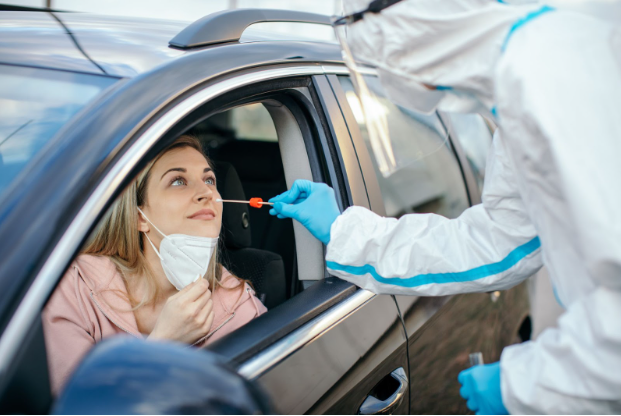How Do Medical Assessments Promote Road Safety?

A health assessment aims to understand an individual’s health condition, aiding in timely diagnosis and effective treatment planning. It serves as a roadmap for healthcare professionals, guiding them from preventive measures to specific treatments and palliative care. By identifying specific health needs, the healthcare system can address issues comprehensively.
This evaluation is instrumental in detecting illnesses in both symptomatic and healthy individuals through medical history reviews, physical examinations, diagnostic tests, and subsequent treatment planning. Accurate documentation of this health episode is crucial for maintaining individual health records. Within contemporary society, ensuring road safety remains a significant concern.
Medical assessments, such as the driver accreditation medical assessment, play a critical role in this endeavour. These assessments serve as a cornerstone, identifying potential health risks in drivers and ensuring their fitness to operate vehicles. Their impact on road safety is profound, enhancing well-being while significantly reducing accident risks and fatalities by mitigating health-related driving hazards. In this article, we’ll reveal how Medical Assessments Promote Road Safety.
Assessing Health Early:
Health assessments play a crucial role in uncovering diseases that might otherwise go unnoticed in seemingly healthy individuals. By regularly evaluating drivers, these assessments ensure their physical and mental aptitude for handling vehicles.
Factors like vision, reflexes, cognitive prowess, and overall physical well-being undergo scrutiny, confirming a driver’s capability to maintain safe driving standards. This meticulous assessment significantly diminishes the probability of accidents resulting from health-related impairments, contributing profoundly to road safety standards.
Health Risks:
An individual’s health assessment delves into multiple dimensions encompassing mental, physical, psychological, and sexual well-being. Through meticulous medical evaluations, various health conditions that could hinder a person’s safe driving abilities are identified. Conditions like epilepsy, vision impairments, cardiovascular problems, and specific neurological disorder possess the potential to substantially impact one’s capability behind the wheel.
Detecting these conditions through thorough medical assessments enables authorities to proactively prevent accidents resulting from health-related incapacitations, thereby significantly bolstering overall road safety standards.
Mitigating the Risk of Sudden Incidents:
Medical screenings play a crucial role in identifying conditions prone to sudden incidents like seizures or blackouts, aiding in the proper management or restriction of driving privileges to prevent potentially catastrophic accidents. Detecting these risks early allows for intervention and safeguards on the road. Neglecting personal well-being contributes significantly to roughly 40% of fatalities, highlighting the gravity of disregarding one’s health.
Health assessments serve as a wake-up call, raising awareness about an individual’s health status and the essential need for medical oversight. By undergoing these evaluations, people gain valuable insights into potential health risks, prompting them to seek necessary medical guidance and supervision. This proactive approach empowers individuals to prioritise preventive healthcare, fostering self-awareness and responsible health management. These assessments act as a crucial entry point to preventive care, promoting a culture of proactive health consciousness and well-being.
Promotes Safe Driving Practices:
The primary aim of safe driving recognition initiatives is to promote and enhance driver awareness concerning safety measures. These programs, an essential component of formal fleet safety strategies, highlight exemplary driving performances. They serve as models for other drivers within the fleet to emulate, fostering a culture of safety.
These initiatives can originate either internally within a company or through involvement in nationwide safe driver award programs organised by renowned associations. By recognising and encouraging safe driving behaviours, such programs significantly contribute to a safer driving environment and heightened driver consciousness towards safety protocols.
Driving with Adaptive Equipment:
When individuals require adaptive equipment for driving, a process guided by the Best Practice Guidelines established by the National Association for Driver Rehabilitation Specialists is implemented. This process involves a comprehensive assessment conducted by an Occupational Therapist/Certified Driver Rehabilitation Specialist.
This evaluation aims to determine the medical fitness, functional status, and appropriate equipment necessary for driving with adaptations. Various vehicle options, equipped with state-of-the-art tools, are available to cater to diverse needs, ensuring individuals find the most suitable solution for their specific requirements.
Vision Detection for Safe Driving:
Understanding the connection between vision and driving gains significance, especially with an ageing population. As drivers grow older, age-related visual changes and increased prevalence of eye diseases contribute to vision impairment among older drivers. This rise in impaired vision has notable implications for road safety, as older drivers, often involved in injurious crashes, face challenges with intersections, turning across traffic, and yielding.
Ensuring regular vision checks becomes crucial for safe driving. Detecting and addressing vision impairments promptly can significantly mitigate risks on the road. It’s essential for all drivers, particularly older individuals, to prioritise regular eye examinations to maintain road safety and prevent accidents stemming from compromised vision.
Medical assessments are fundamental in promoting road safety by identifying and managing health-related risks, ensuring drivers are fit to operate vehicles, and creating a safer environment for everyone on the roads. Regular screenings serve as a proactive measure in preventing accidents and upholding safety standards.
Read More: Sciatic Nerve Pain




